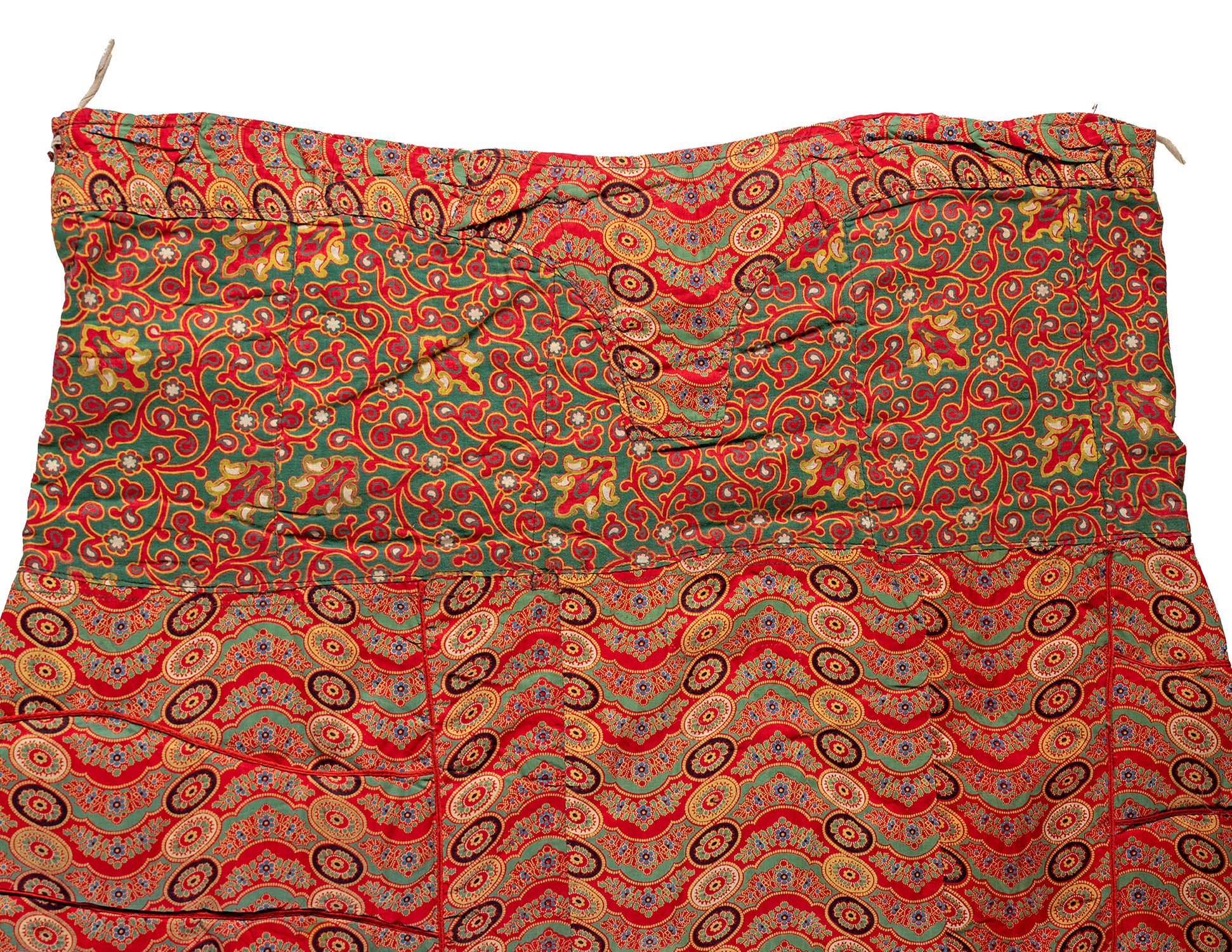#3 TURKEY RED
Turkey red was an expensive and complicated process of dying fabric to create a vibrant, bright red which did not fade over time. Before the creation of synthetic dyes in the mid 19th century, the process could take weeks, and involved unappealing ingredients such as sheep’s dung and rancid olive oil. It was created around Manchester from the late 18th century, and was used for the lucrative export market as well as for domestic sales.
At the 1851 ‘Great Exhibition of the Works of Industry of All Nations’ in London, F. Steiner and Co, of Accrington, exhibited machine-printed Turkey red velvets. In the collection at Gawthorpe we can see some of the fashionable applications of Turkey red, as well as the influence of fabrics such as Indian chintz and Persian motifs.







